[Published at 48 Hills] From the onset of We’re All Going to the World’s Fair‘s premiere at Sundance, when Jane Schoenbrun was nominated for the NEXT Innovator Award for their feature directorial debut, journalists and audiences alike praised them for creating a singular cinematic language uncannily expressing the feeling of gender dysphoria. It felt like an unprecedented representation in film. In their director’s statement, Schoenbrun references film critic Willow Maclay’s Body Talk series:
“Transgender Cinema as it is understood by cisgender filmmakers is exterior forces and changes, but we understand transness as an internal, textural, abstract energy. Especially in the case of dysphoria. What cisgender filmmakers typically do not understand is that for us, the internal becomes external, not the other way around. Dysphoria manifests itself in real exterior ways, but it originates from an internal place.”
About a teenager, Casey (played by newcomer Anna Cobb), who begins to document a possible physical transformation after playing a popular online roleplaying horror game, We’re All Going to the World’s Fair finds the harmony between the dreary and endearing, the contrast between the Internet’s comfort of community and contagion of manipulation, and the internal unease of dysphoria. These thoughtful explorations lie at the heart of the growing online buzz around Schoenbrun’s film, which parallels the viral creepypasta storytelling world it’s partially inspired by.
On the cusp of We’re All Going to the World’s Fair‘s release (it opens Friday at Opera Plaza and other cinemas), I had a chance to speak with Schoenbrun about the making of their film, its inspiration, growing up on fan-fiction and forums, trans and queer horror, and more.
48 HILLS I enjoyed your film. It was really powerful.
JANE SCHOENBRUN Thank you.
48 HILLS It’s been taking the world by storm.
JANE SCHOENBRUN Kind of crazy. It still blows my mind how many people have seen it. There was a time when I was like, “I feel like 200, 300 people will get to see this movie,” and many more have.
48 HILLS I heard about it through word of mouth, and then I couldn’t stop hearing about it. And then I was like, “I have to see this.”
JANE SCHOENBRUN I’m still catching up to this because it’s all been from home with the pandemic. But I am aware of it spreading outwards in a way that’s so cool, and will maybe continue to. Like it’ll be on HBO Max in the fall. My happiest thought is a bunch of people seeing it there in Halloween season, and not quite knowing what it is, and turning it on at 10pm and being like, “What the fuck am I watching?”
48 HILLS Hell, yeah. That would be a perfect Halloween watch. In your director’s statement, you mentioned that the story comes from your experience as a kid telling horror stories. Was this during the creepypasta era?
JANE SCHOENBRUN No, I’m a little older than creepypasta. When I was really on [the Internet] was almost right on the cusp of puberty, like 13 or 14, which would have been 2000, 2001. Still, pre-YouTube, pre-Reddit, definitely pre-Myspace Internet. An Internet of Usenet and AOL and forums. I was writing fan-fiction on GeoCities websites and first generation internet forums.
48 HILLS I love storytelling communities like that because they have the ability to unite likeminded people with common interests. And that’s one of the messages of this film. What did that community mean to you, and how did it shape you as a storyteller and person?
JANE SCHOENBRUN I’ve been reflecting on it a lot lately, how I’ve always been a lurker in online spaces. I sometimes would post, but I never enjoyed it. I don’t know that I was looking for human connection in those spaces, which is kind of a weird thing to say because I think it’s more common maybe that a lot of people are going into those kinds of spaces to find a personal human-to-human community.
For me, it was a lot more about having some sort of outlet—having an outlet to culture and creativity and having an outlet to be creative. When I think about my message board evolution over the years, around teenage years I left maybe deep nerd spaces of the Internet that I had been in, like X Files fan forums or whatever. I found my way to Radiohead message boards. The way that I was defining myself in contrast to my physical suburban surroundings was by finding punk music and weirdo, neutral music that felt validating in an identity kind of way.
And I think it was always that, right? It was always looking to explore the aspects of myself that I didn’t have outlets to explore in the real world. I don’t think that that’s a thing that I look for on the Internet anymore, which is interesting. It was a space that could exist because I didn’t have a space in the real world for these things. And now I’ve built a space in the real world for these things, and so the Internet sort of becomes something else for me.
48 HILLS What is the Internet for you now?
JANE SCHOENBRUN Well, I guess it’s still culture. I’m still a giant music nerd. I’m not going to name them, but I still totally read forums to find out things that I should be fucking with, whether they be movies that I’ve never seen or music that’s coming out that I think I might like. I’m still a deep nerd for that. That part of my life hasn’t gone away, so I kind of take it back. But the film and the stuff I’m working on now, like the next film and the thing after it, which I kind of view as a trilogy—I’ve been calling it my screen trilogy—is about this escape from the screen. Or the way in which this is a movie about someone who probably wishes they could be making movies in the way that I wished I could be making movies at that age.
But I’m me making the movie and, as part of that process, I’m also me becoming myself in an identity that finally feels good and real. There’s something to do with transition here, or it’s all connected: transition, art making, watching, needing that mediated, unreal space to express aspects of my personality, and then not needing it. I think it’s all one thing in a way.
48 HILLS So what is Casey ultimately seeking? Companionship? Proof of the supernatural? Or exploring her identity?
JANE SCHOENBRUN It’s a lot about identity play and about doing that in a space that feels safe for the time in her life and the space that she’s in in her life. When I was in kindergarten, I loved “Are You Afraid of the Dark?” Which is this old, scary TV show on Nickelodeon.
48 HILLS I loved that show. The Midnight Society.
JANE SCHOENBRUN Yeah, The Midnight Society. And I love Goosebumps. These were like my earliest loves. It was art time or whatever in first grade and I would draw these scribbly pictures with ghosts hidden around the margins. And people would be like, “This is a morbid little kid you got on your hands. This is a little scary,” in this sort of like, “Is this person going to grow up to be OK?” kind of way—and it just feels so fucking queer. That is queer shit right there. This relationship between wanting to express yourself creatively, but the thing you’re wanting to express isn’t pretty in the traditional heteronormative sense of the word, and feeling a lot of shame and insecurity about that.
You go looking for a way to express that in a space that will embrace it. These were definitely the things that were on my mind while I was writing and making World’s Fair. Almost certainly she doesn’t understand any of this, but it’s what Casey is striving and looking to do in the film.
48 HILLS It absolutely translates. And the images and language really capture the feeling of gender dysphoria quite amazingly.
JANE SCHOENBRUN Thank you.
48 HILLS It’s really unprecedented. Was there a mood board or a lookbook that you put together for these scenes that you developed?
JANE SCHOENBRUN There were definitely references, and Dan Carbone, my DP, and I talked a lot about what films were influential. It’s funny, I did look back at the lookbook after we shot the film. There’s one shot in particular that I believe is from Videodrome that I unconsciously maybe ripped off. I heard there was a shot in the lookbook of somebody with their hand on a screen. The hand almost looks inhuman in this way that [Casey’s challenger in the game] JLB’s hand looks towards the end of the film, silhouetted against the light of the screen. I think you pull from various sources no matter what.
I thought a lot about cursed images, which is a big Internet creepypasta thing, right? The genre conventions of that feel different to me than the genre conventions of the traditional horror film. And thinking a lot about what makes an image cursed to the Internet. Haziness is a big part of that. Film, texturally, the grain and noise. Low fidelity photo booth recording software. And then a lot of it was super organic and was just about creating a nocturnal vibe on set.
The shot that people probably talked to me about more than any other is Anna leading her face into the light and smiling. And that was completely organic. We had Anna sleep for 20 minutes because we needed a lot of footage for JLB to scroll through of Casey sleeping through the night. We were all just sitting there in silence on set, watching this unchanging image of Anna asleep in bed for 20 minutes. I was just staring at it until my eyes sort of went cross-eyed on the monitor.
Then I noticed that there is this light that had been left on for a narrative reason by the side of the bed. I just started seeing the image in a certain way. Twenty minutes passed, and I said to her, “Anna, lean into that light and smile.” The original idea is that she would sort of do more of a paranormal activity, exorcist body movement thing. But there’s something about that light and that frame and her face crawling towards it that struck me in the moment. It was often being as present as possible in the environments and textures and moods that I was trying to capture.

48 HILLS That image was fantastic. JLB’s story at the end of the film was fascinating. I don’t really believe it. Do you have a theory?
JANE SCHOENBRUN Anna and I just recorded the audio commentary for the Blu-ray, and we were catching up. I love Anna. Anna’s such a character. JLB showed up halfway through the film, and I was like, “Anna, you think that story that JLB tells at the end is true?” She thought about it for a while and told me her answer. Then she asked me the same question, and I thought about for a while whether I wanted to say it, and I said, “It’d be fun to just say right here what I really think and then not take myself so seriously. It’s been long enough. And who’s going to be listening to this fucking Blu-ray recording? Who hasn’t already thought a little bit about it?”
So I gave my answer on that Blu-ray track. Endings are complicated things because we’re all looking for binary, happy/sad resolution. We’re looking for resolution from an ending. We don’t get resolution from the Internet or from life in the same way. Especially as someone who’s trying to make work that isn’t there just to lull people, I’m always going to have a complicated relationship with that impulse for resolution. I think I’m always looking for something that’s a little more complicated.
The ending that I thought about a ton with this one was the end of “Twin Peaks: The Return.” It just felt like a punch in the face. And then I was in a bad mood for the next two days. When. I finally started unpacking it and what it meant to me, and its connection to this body of work that meant a lot to me. It just took me weeks to figure out my relationship to it. When a piece of art can get its hooks in you like that, it’s a really beautiful thing. And doing the work to try to figure out how it affects you so deeply is a very personal thing.
I guess the hope is that people doing that work after watching World’s Fair, if it resonates, is, perhaps, tied to the work that I was doing in making work. They’re asking themselves and unpacking similar questions because why do we make art? We don’t make it because we have answers. We make art as an investigation. They’re investigating, perhaps, similar things through their own lens that I was investigating while making the work.
48 HILLS I agree. It bonds the creators and viewers. There have been a lot of great trans and queer horror films released lately. Do you think horror has always been a champion for the marginalized?
JANE SCHOENBRUN My short answer would probably be no. The history of horror in the 20th century is one about fear of the other rather than support for the other. A lot of other people have taken comfort in that history. But I don’t think the majority of those films—Freaks, Dressed to Kill, Psycho, Sleepaway Camp, Nightmare on Elm Street 2, these films that are maybe explicitly or implicitly dealing with queer themes—I don’t think that the gaze in those films is my gaze as a queer and trans person.
But there’s a deep relationship between the two, between the history of the genre and queerness and transness. I don’t think it’s a coincidence that it’s a genre where a lot of those sorts of anxieties and identities are being unpacked in a really visceral way.
48 HILLS You mentioned this in your director’s statement: cinematic language is evolving as well. For a while we were stuck recycling the same cinematic language. But now, we’re exploring new ways of storytelling, new images, new ways of breaking the norm. And paralleling that, we’re also creating new ways of basically describing our identities in the human language, which we haven’t been able to articulate in the past. Do you think both of these will continue to evolve in harmony with each other in the future?
JANE SCHOENBRUN I do, but under capitalism in America there’s always going to be this push and pull of first moving forward—and then that getting commodified and turning into a zombie genre, an “art form,” or whatever. There was one major streamer who passed on World’s Fair at Sundance, and then we heard through the grapevine that they were in meetings telling everyone that they wanted films like World’s Fair. What they meant by that was they wanted the sort of the more commercial version of it. They wanted the version that doesn’t diverge and doesn’t frustrate as much as it titillates.
Let’s just think about American horror films over the last decade or so. Get Out is such a landmark. Get Out is pretty close to a fucking perfect movie. It’s incredible. It had such a cultural impact because of the ways in which it was pushing at things that had not been pushed at before from both a thematic perspective, but also from a narrative perspective. And just the idea that it birthed this social horror, that wasn’t a new thing. You can point to horror films throughout the 20th century that were exploring issues of race or issues of identity or gender or whatever it might be, in a personal, visceral way through the genre. But it was doing it in a way that felt, to me, major and innovative and a deserving breakthrough.
Close to five years later, that has become a much less groundbreaking genre, in my opinion. Or I feel like the social thriller, or whatever we might call it, has become its own cliché. if I was making my “I’m trans” social thriller, you find the metaphor of how it feels to be trans, and then you find a way to turn it into a horror. It’s like actually a ghost or something. And then you explain it by the third act and leave people being like, “Wow, I learned a little something about the trans experience and I had some good spooks.”
Hollywood is making these films now. And that feels to me like a great example of the way in which innovation can be commodified into something that feels artistically dead or zombie-like. And so it’s up to filmmakers. One film that I saw recently in Sundance is called Master by Mariama Diallo. I thought it was a fascinating, almost revisionist social thriller in the way that it was challenging a lot of the conventions that we’ve come to understand when we watch a movie like that. It disquiets the viewer in the way that it wasn’t cohering into a clean metaphor that fits that structure perfectly. It felt quite intentional to me.
It felt like this was an intentional attempt to evolve that, perhaps, stagnant genre a little bit as an artist. For me, I’m always going to be on the side of artists. I’ll make my film and then let Hollywood remake it in a more commercially-minded, less enriching way. And if I’m lucky, I’ll get to keep doing my thing in new ways and pushing form and language for myself as an artist elsewhere.
48 HILLS And you’re the blueprint. And I love that you bring up that economic point that profit prohibits us from innovating. We hit a ceiling at a certain point if we keep innovating for profit.
JANE SCHOENBRUN It’s all a capitalist thing, right? It’s the one thing that they can’t own. It’s the one thing that they can’t own because the price of entry is genuine intention outside of profit—like a genuine desire for some kind of real exchange between people that isn’t built from a foundation of titillation or profit or entertainment. Entertainment is fine, except entertainment within our world right now can be sinister. And it’s the one thing that they can’t own, right? Because it’s counter to the concept of ownership. And so they can only see a show “Atlanta” or a movie like “Get Out” or a movie like mine, and say, “We need more of that. Give us more. Give us more.”
WE’RE ALL GOING TO THE WORLD’S FAIR opens 4/22 at Opera Plaza Cinema, SF, and on digital platforms. More info here.
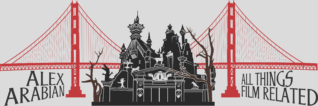
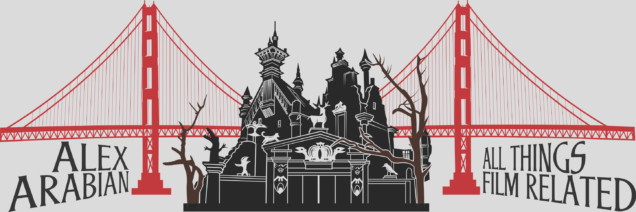
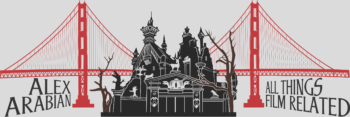

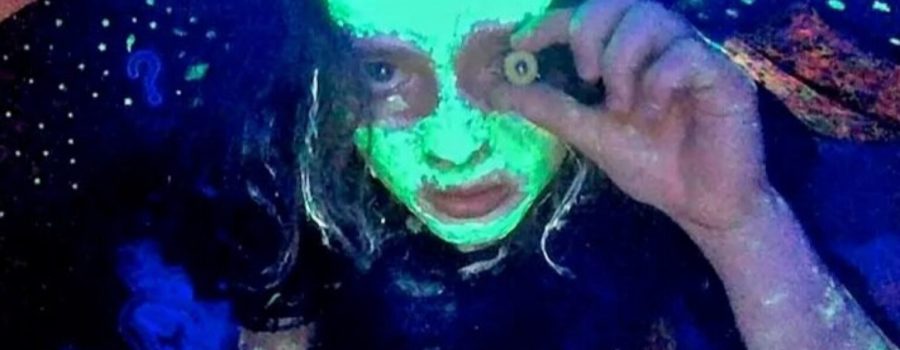
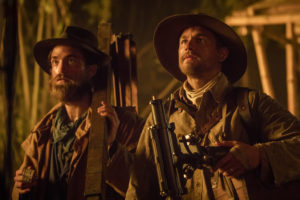
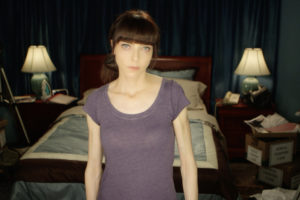

Leave a Reply
Your email is safe with us.